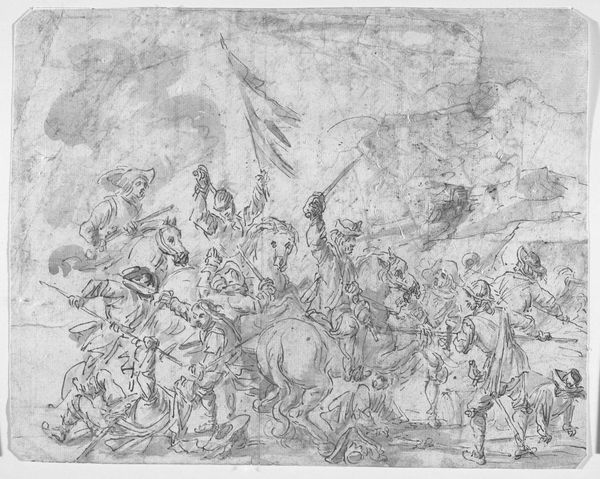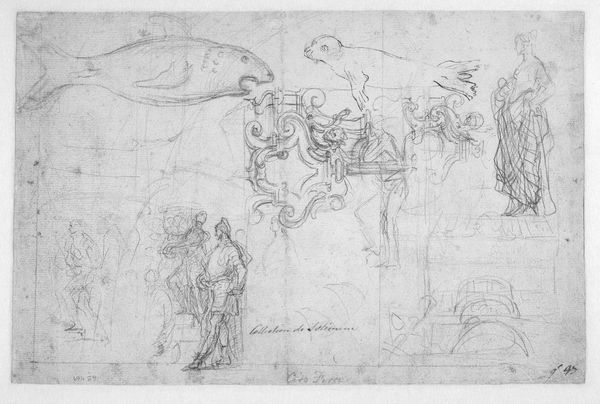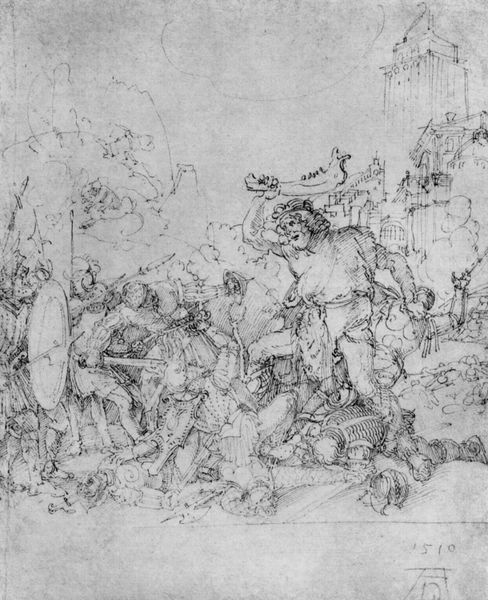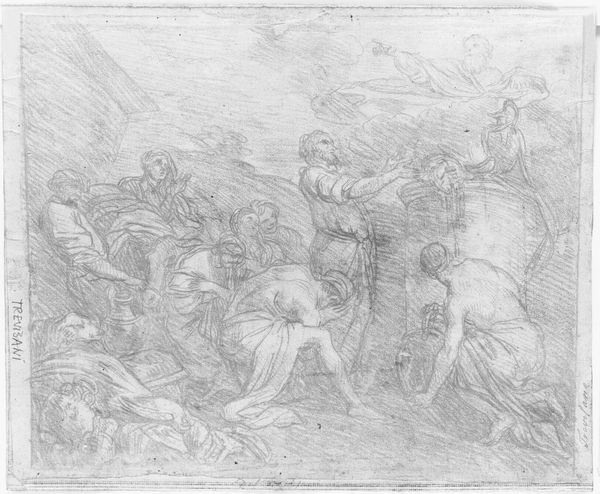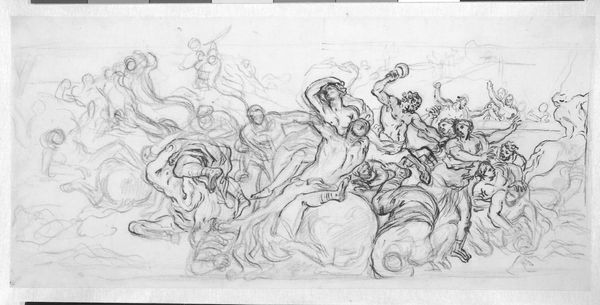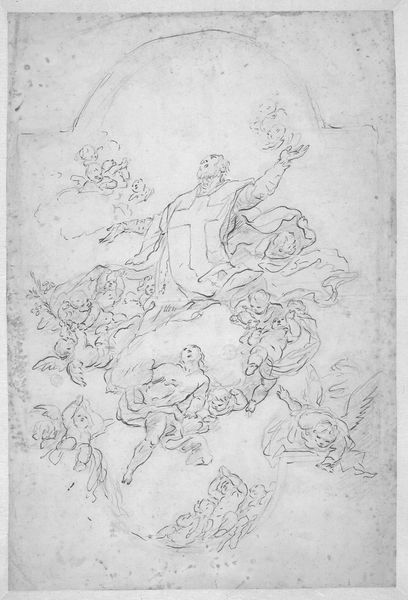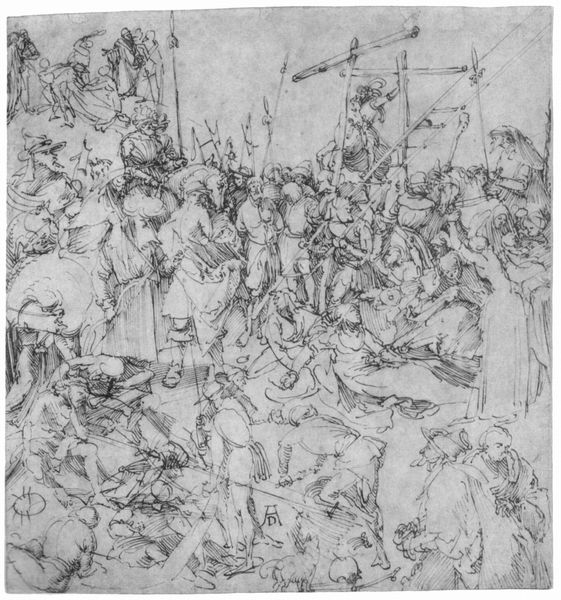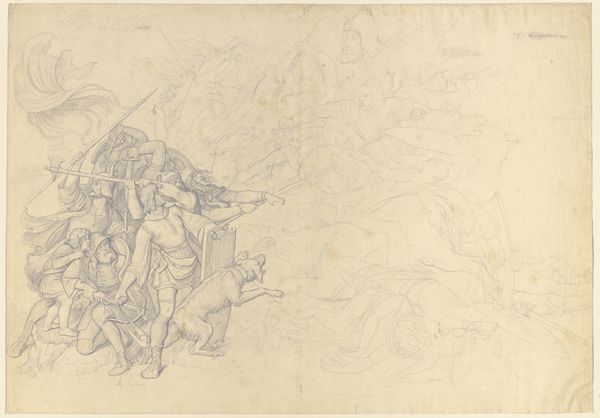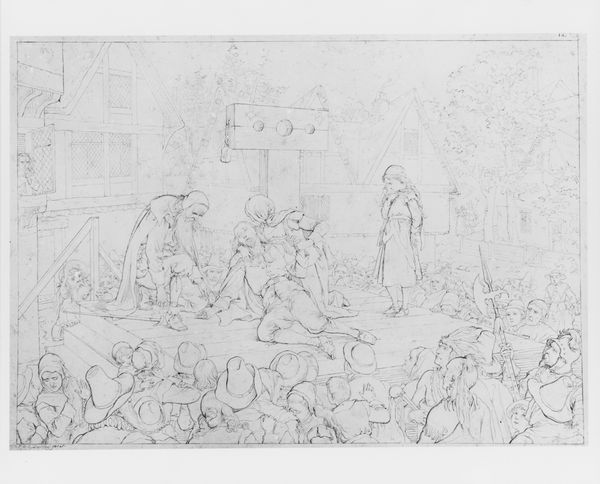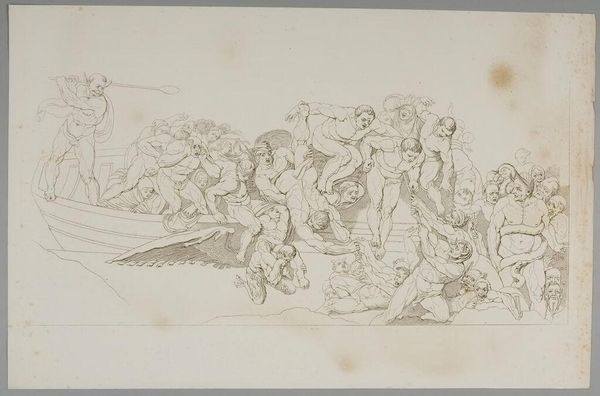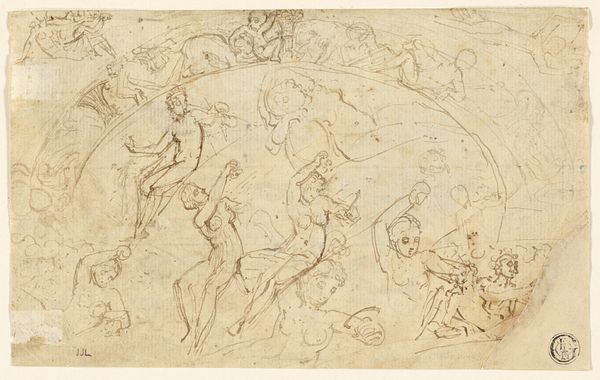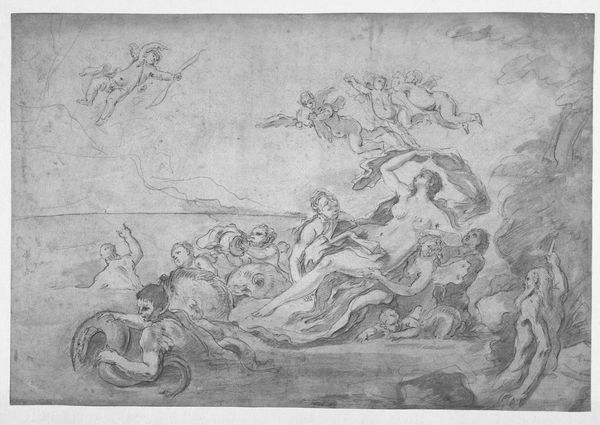
drawing
#
drawing
#
baroque
#
figuration
#
history-painting
Dimensions: 226 mm (height) x 350 mm (width) (bladmaal)
Curator: Let’s take a closer look at this Baroque drawing. It depicts "St Maurus healing the sick in France," dating from 1706 to 1709, currently held in the collection of the SMK, Statens Museum for Kunst. Editor: Wow, talk about organized chaos! At first glance, I see a scene crammed with bodies and emotion. There's so much implied movement – like a freeze-frame from a play. I'm immediately struck by the pathos – all this suffering laid bare. Curator: Indeed. Examining it through a critical lens, the piece reveals intriguing dynamics of power, faith, and social structure within the historical context. Saint Maurus's ability to heal reflects the Church's dominance. The "sick" can be understood as marginalized individuals, thus visualizing hierarchies within society at that time. Editor: It's fascinating how the artist uses line work. It feels preliminary, like a sketch, which kind of reinforces that idea of a single moment frozen in time. Are we meant to see this almost like a journalistic snapshot? The rough edges suggest a truth seeking rawness to me. Curator: Considering that these kind of scenes and figures frequently recur throughout religious and historical depictions during the Baroque era, it might also highlight certain expectations around the display of miracle and sanctity, with the sick and suffering always already an important constituent of its image building. It subtly entrenches existing orthodoxies around the representation of class and physical suffering, while it seems to promote spiritual hope. Editor: I see what you mean. Even with this implied drama, there's an undeniable artifice at play. That swarm of cherubs floating overhead are not so subtle reminders that what is portrayed here are ideological claims about divinity. But even recognizing all the socio-political implications does not take away from that initial emotive response. Looking at all this misery kinda takes your breath away. Curator: Precisely, these intersections between representation, suffering and structural violence is important when studying the canon in order to both celebrate art and advocate justice. Editor: Absolutely. And after spending time with this, it really strikes me how a simple drawing from centuries ago can open up such vast, rich conversations. I guess it is testament to the artist’s abilities and the magic of observation!
Comments
No comments
Be the first to comment and join the conversation on the ultimate creative platform.
